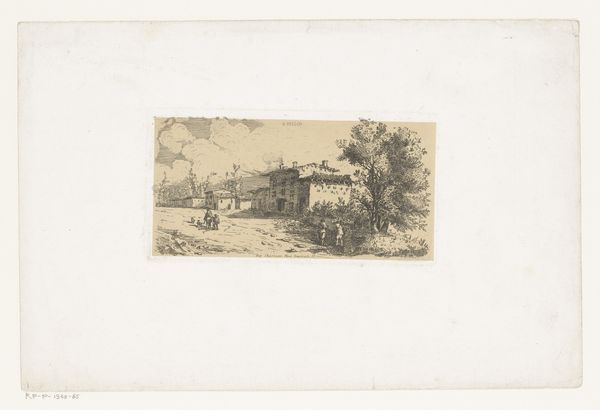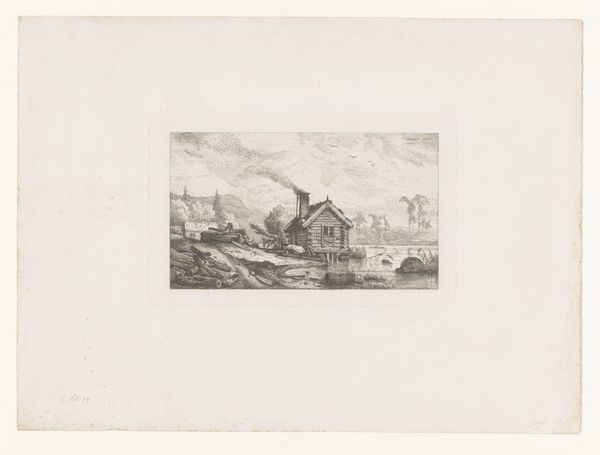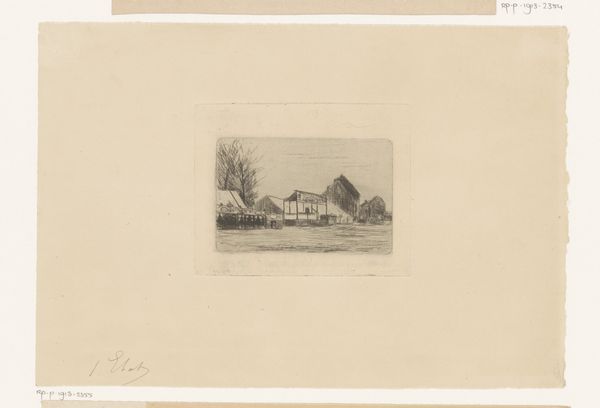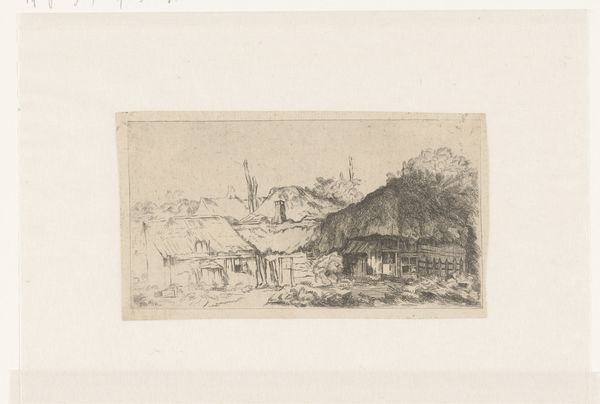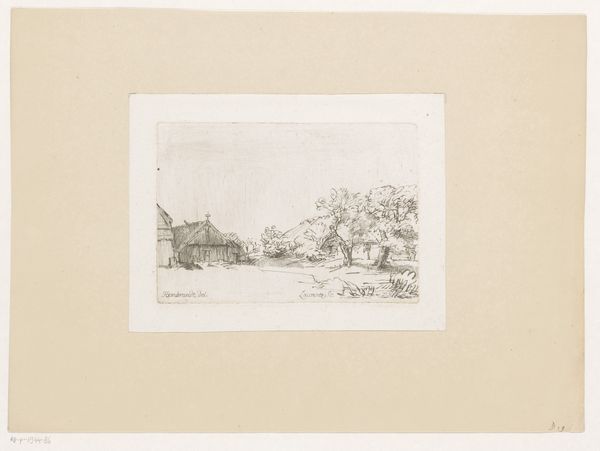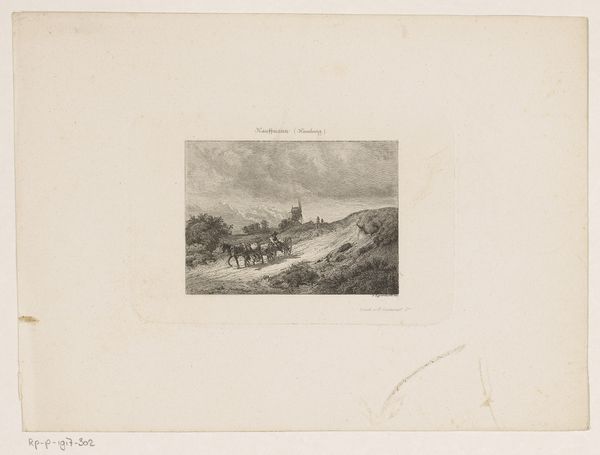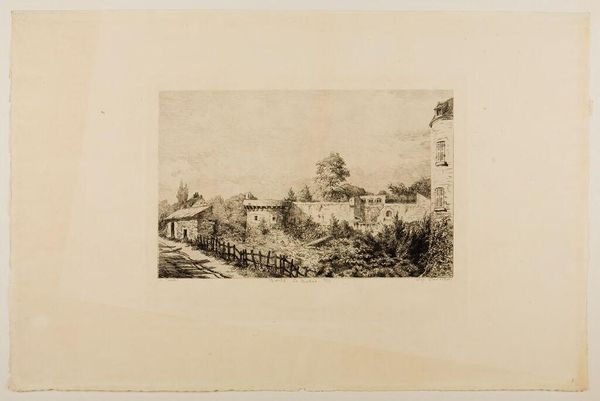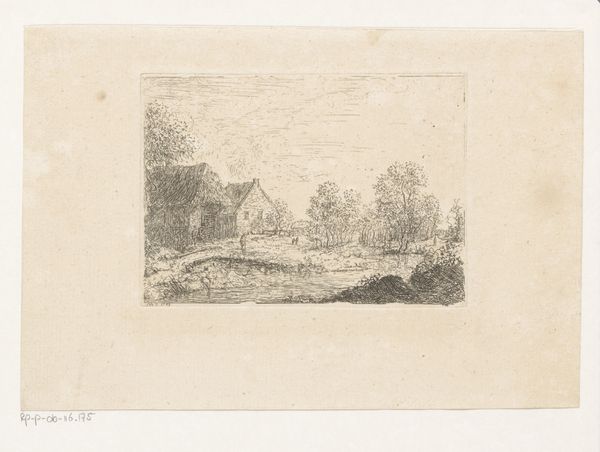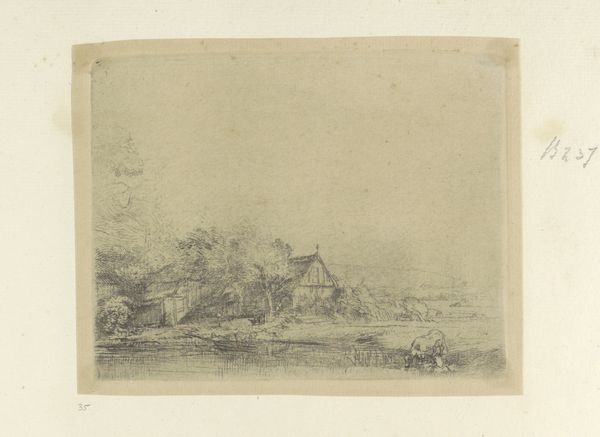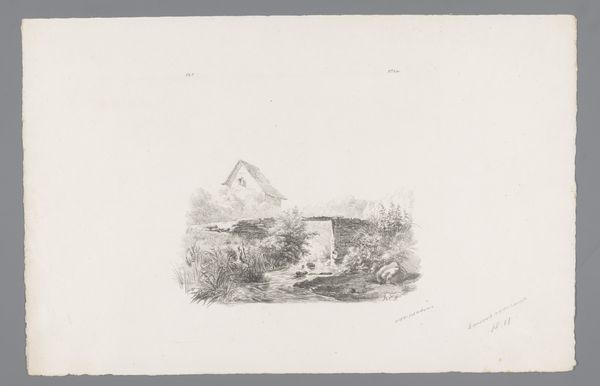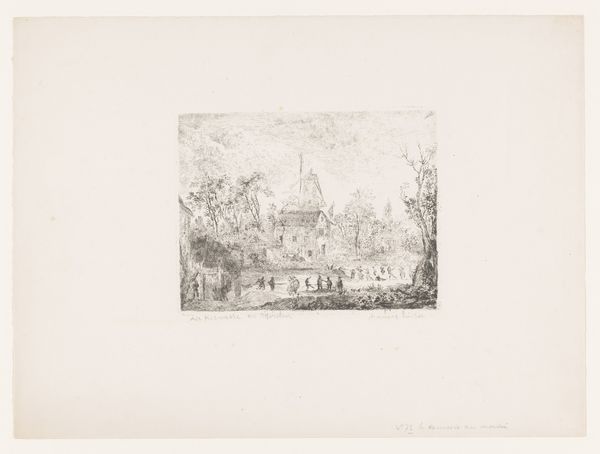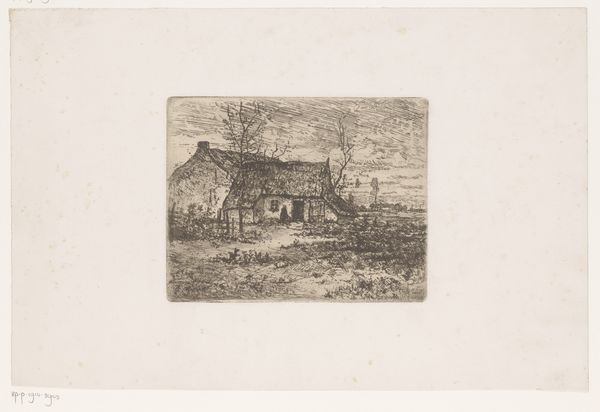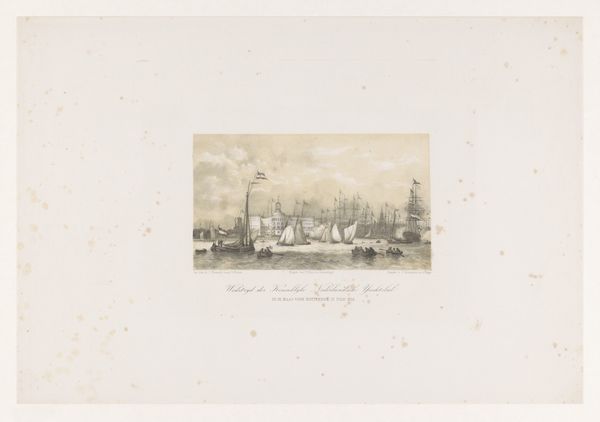
print, etching
# print
#
etching
#
landscape
#
realism
Dimensions: height 79 mm, width 120 mm
Copyright: Rijks Museum: Open Domain
Paul Parmentier made this etching, “Circustenten,” in the Netherlands, likely near the end of the 19th century. The work depicts a temporary structure on the outskirts of what appears to be a respectable town. The circus was a popular form of entertainment at the time. But in many ways it sat outside the bounds of established social norms, often traveling from town to town and setting up in temporary locations, like the one seen here. The visual codes in this image highlight the way institutions can shape artistic production. On the left of the image, a formal building with an elaborate facade suggests a stable, rooted civic presence. Juxtaposed to the right are the more roughly sketched tents, suggesting a fleeting, less orderly presence. How does the image subtly explore tensions between the established order of society and the more chaotic and unsettling world of popular entertainment? To fully understand an image like this, we might look at how the popular entertainments of the time were viewed by the middle classes, using newspaper accounts and other documents. Art always reflects the time and place in which it was made.
Comments
No comments
Be the first to comment and join the conversation on the ultimate creative platform.
